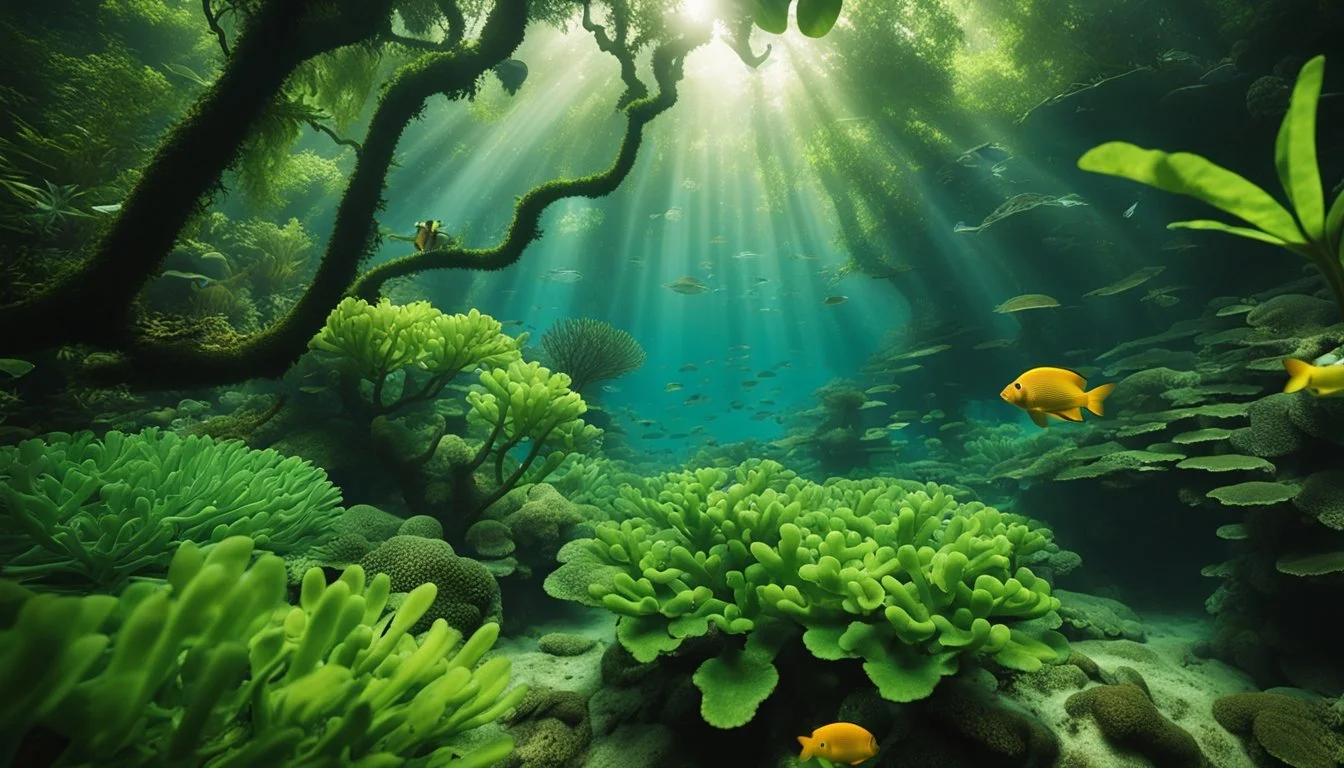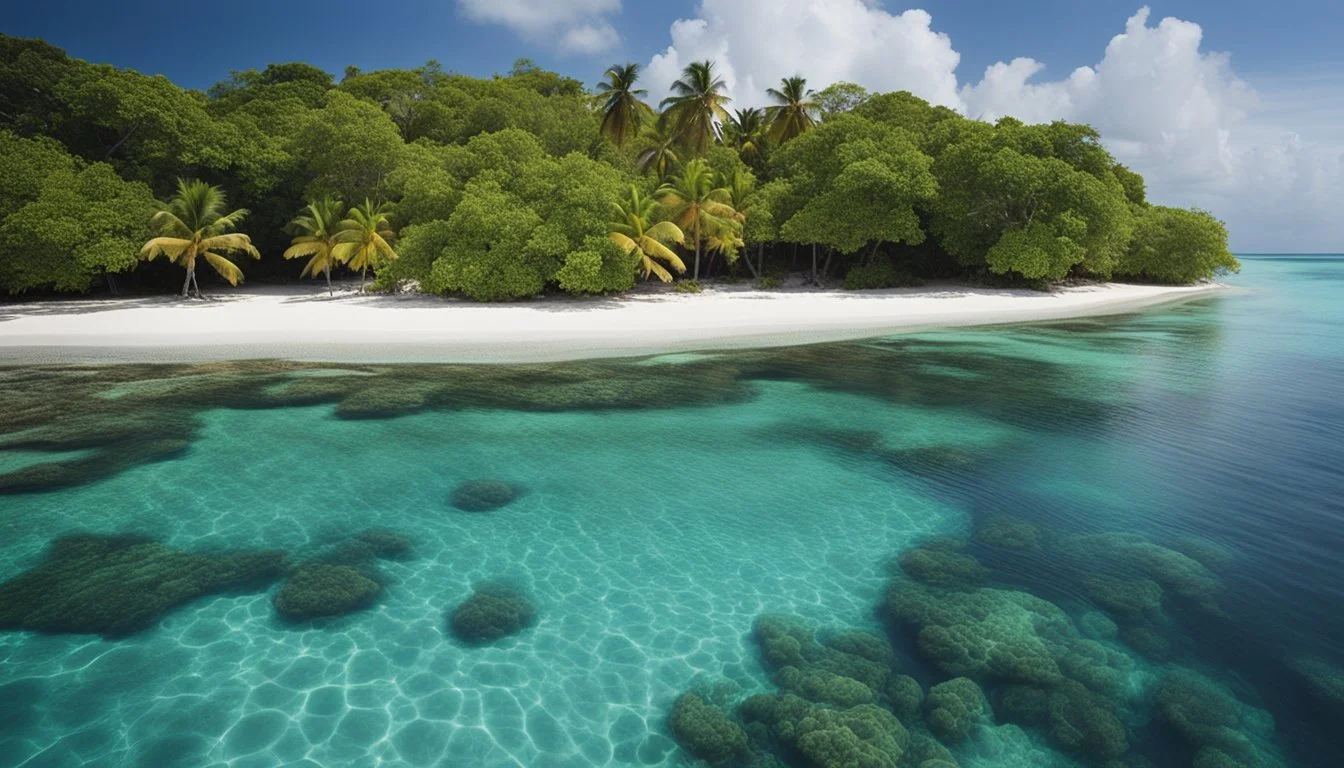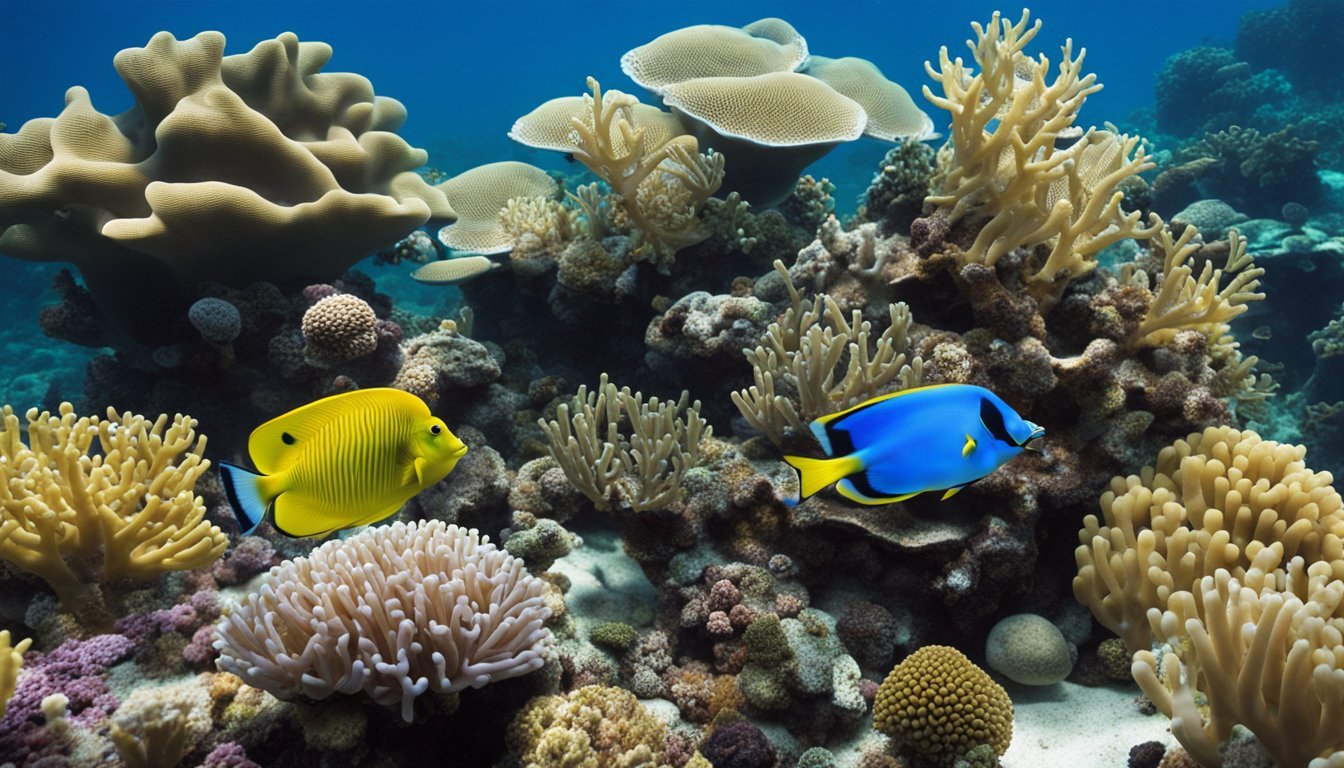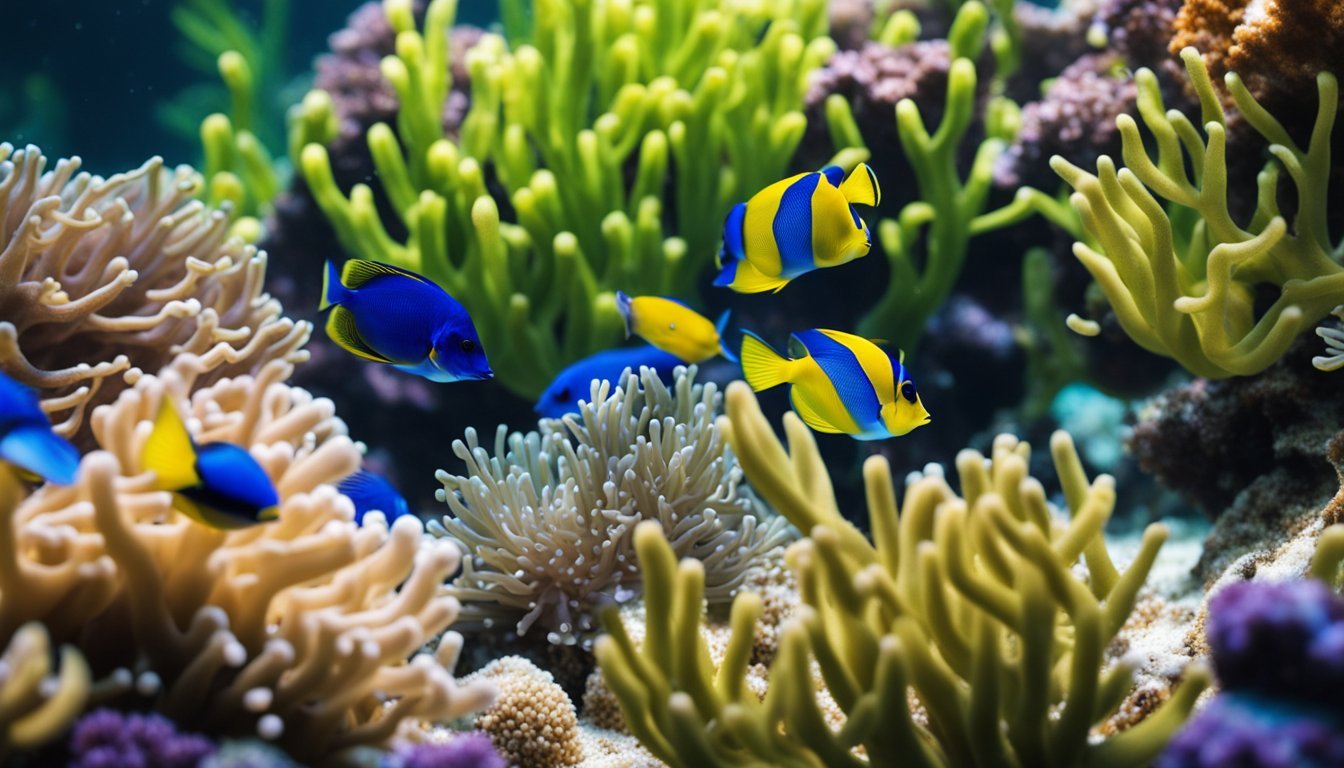Top Coral Reef Documentaries You Need to See
Exploring Underwater Marvels
Coral reefs, often referred to as the rainforests of the sea, are among the most biodiverse and valuable ecosystems on Earth. They provide shelter and sustenance for a vast array of marine life. Documentaries on coral reefs serve as a crucial conduit, bringing the underwater spectacle of these vibrant ecosystems to the surface for audiences worldwide. These films often showcase the intricate relationships between species and the dazzling array of colors displayed by coral polyps.
The role of documentaries extends beyond mere visual enchantment. They play a pivotal part in conservation efforts by educating viewers about the threats facing coral reefs, such as climate change, pollution, and unsustainable fishing practices. Through compelling storytelling and cinematography, coral reef documentaries inspire and inform the public, galvanizing support for protecting these vital ecosystems.
The production of a coral reef documentary is a significant undertaking. It involves underwater cinematography and a deep understanding of marine biology. These documentaries are crafted with precision by filmmakers who spend hundreds of hours capturing the dynamics of coral ecosystems. They highlight the significance of reefs to local and global environments, emphasizing the urgent need for their preservation in the face of environmental challenges.
Life (2009)
Life (2009) is a BBC nature documentary series, with a special focus on the adaptive strategies and fascinating behaviors of Earth's wildlife. The series comprises ten episodes, with one episode titled "Challenges of Life," introducing viewers to a range of remarkable survival tactics.
The production of this series took four years and spanned every continent and habitat across the world. It features many sequences that had never been filmed before, such as the Komodo dragon hunting water buffalo and the capuchin monkeys that use tools to open nuts.
Episode Highlights:
"Reptiles and Amphibians" showcases the remarkable adaptations of cold-blooded animals.
"Fish" explores the underwater world, presenting the life of deep sea creatures and coral reef inhabitants.
"Creatures of the Deep" investigates the mysterious creatures dwelling in the ocean's abysses.
The documentary is produced by the BBC with the Discovery Channel, SKAI TV, and Open University. Narrated by David Attenborough in the UK version and Oprah Winfrey in the US version, the series is recognized for its high-quality cinematography.
Significant Features:
Filming Techniques: Ultra high-speed cameras capturing behavior.
Production Footage: Over 3,000 hours yielding 130 stories.
Renowned for illustrating lesser-known aspects of species, Life (2009) provides educational insight with an emphasis on the interconnectedness of the ecosystem. Its portrayal of coral reefs, in particular, reveals intricate symbiotic relationships and the vibrant biodiversity that characterizes these aquatic environments.
David Attenborough: A Life on Our Planet (2020)
Released: 2020
Director: Alastair Fothergill, Jonathan Hughes, Keith Scholey
Genre: Documentary
David Attenborough: A Life on Our Planet is a poignant documentary showcasing Sir David Attenborough's reflections on his career and the decline of the planet’s health. The film serves as a witness statement from Attenborough, who has seen the natural world from a unique perspective over his 60 years working as a natural historian and broadcaster.
The documentary emphasizes:
Biodiversity Loss: The film captures the stark reality of decreasing biodiversity, attributing it to human activity.
Climate Change: It discusses the impact of climate change on natural habitats, including coral reefs.
Human Impact: Attenborough reflects on how humanity's footprint has escalated and the consequent shifts in the environment.
This documentary uniquely combines breathtaking cinematography with a powerful message, showcasing both the beauty of coral reefs and the urgent challenges they face. The viewers are taken on a tour through various ecosystems, including lush rainforests, deep oceans, and the vibrant but vulnerable world beneath the sea.
It highlights the crucial role coral reefs play in marine life ecosystems and underlines the ominous threats they are currently facing, from coral bleaching to ocean acidification.
The film is:
Informative: Providing scientific explanations and showcasing extensive footage.
Emotional: It includes personal anecdotes from Attenborough's experiences.
By the end of the documentary, viewers are not only educated about the trials coral reefs are enduring but are also left with a sense of urgency regarding the need for global environmental sustainability.
The Blue Planet (2001)
The Blue Planet is an acclaimed documentary series that premiered in 2001. It was produced by the BBC and narrated by Sir David Attenborough. The series consists of eight episodes, each focusing on a different aspect of marine environments.
The Blue Planet was groundbreaking for its extensive use of underwater cinematography. It brought to the audience stunning visuals of marine life, from the vast open ocean to the mysterious deep-sea vistas. The revolutionary camera techniques and technologies used during filming allowed viewers to experience the underwater world in ways never before seen on television.
The series won multiple awards, including BAFTAs and Emmys, for both its visual effects and educational content. Its impact on public awareness about oceanic life and ecosystems was substantial, leading to increased interest in marine conservation.
Critical Reception
Praise: The series was lauded for its educational value and production quality.
Impact: It raised awareness of the complexity and vulnerability of marine ecosystems.
Technical Achievements:
Underwater Cinematography: Innovative filming techniques were employed.
Technological Advancements: The series used state-of-the-art equipment.
BBC has subsequently released a follow-up series, "The Blue Planet II," in 2017, highlighting advancements in marine research and changes in the ecosystems since the original series.
Chasing Coral (2017)
Chasing Coral is a 2017 documentary that provides an in-depth look at the life of coral reefs and the imminent threats they face due to climate change. Directed by Jeff Orlowski, the film follows a team of marine biologists and camera experts who witness the bleaching events altering the seascape.
The documentary is notable for its visual storytelling and the use of time-lapse photography to reveal the stark changes occurring in coral ecosystems. The filmmakers spent more than three years filming over 500 hours underwater, capturing the beauty and the significant loss of life within the reefs.
Documentary Highlights:
Underwater Photography: Utilizes revolutionary camera techniques.
Scientific Insight: Features interviews with leading scientists and reef advocates.
Global Locations: Showcases coral reefs from around the world.
Impact and Recognition:
Won the Audience Award for U.S. Documentary at the 2017 Sundance Film Festival.
Orchestrated a global campaign to raise awareness about coral reefs' plight.
The film serves both as a warning and a call to action, urging viewers to recognize the urgency of preserving these natural wonders for future generations. Through its compelling narrative, Chasing Coral illuminates the coral reefs' critical role in marine ecosystems and underscores the effects of temperature increases on these fragile habitats.
It is available for streaming on various platforms, widening its reach and engaging a global audience in environmental conservation efforts.
Alamar (2009)
Alamar (2009) is a documentary directed by Pedro González-Rubio. This film takes place in the stunning Banco Chinchorro, the largest coral atoll in Mexico and a biosphere reserve. Unlike many traditional documentaries, Alamar weaves a narrative storyline, following a father and his young son as they bond over the impending separation from the boy's Italian mother.
The cinematography showcases the breathtaking underwater ecosystems, bringing to light the vibrant marine life inhabiting the coral reefs. Alamar emphasizes the delicate harmony between humans and nature, focusing on sustainable fishing practices and a simple lifestyle that respects the aquatic surroundings.
The film’s portrayal of the reef is not just a backdrop but a pivotal character in the story, highlighting how the coral ecosystem supports the local community. Through intimate, almost meditative sequences, viewers gain insight into the region's natural beauty and the environmental importance of coral reefs.
Key Elements of "Alamar":
Genre: Documentary with narrative elements
Director: Pedro González-Rubio
Location: Banco Chinchorro, Mexico
Themes: Relationship between humans and nature, sustainable living, family dynamics
"Alamar" received critical acclaim for its visual style and the poignant story it tells through the lens of the life aquatic. It offers audiences a window into an underwater world and a touching human relationship, all while presenting the coral reef as a living entity crucial to both the film’s characters and our planet.
Under the Sea (2009)
"Under the Sea" is a documentary that offers viewers an immersive experience of the ocean's depths. Directed by Howard Hall, it was released in 2009 and is notable for utilizing 3D cameras to bring the underwater world to life. The film was produced by Toni Myers and Michele Hall, with narration provided by actor Jim Carrey.
Primary Focus: The documentary showcases the diverse marine life within the Indo-Pacific regions.
Conservation Message: It highlights the impact of climate change and human activity on these fragile ecosystems.
Viewers are presented with vivid visuals of various marine species, such as:
Cuttlefish
Stonefish
Sea Turtles
Great White Sharks
The documentary also emphasizes the symbiotic relationships within coral reef ecosystems. It showcases the interdependency of coral and marine life, hinting at the delicate balance that sustains these underwater communities.
Technical Aspects: The use of 3D technology in "Under the Sea" was highly praised for enhancing the clarity and bringing the audience closer to the action. The high-definition footage provides an opportunity for people to experience the reef as if they were diving alongside the cameramen.
Educational Impact: In addition to its visual appeal, the film serves an educational purpose by providing insights into the behavior of marine species and the challenges they face. It effectively raises awareness about the importance of ocean conservation.
"Under the Sea" received positive reviews for its engaging content and its success in raising awareness about the underwater environment. The film is often recommended for those interested in marine biology and the beauty of coral reef ecosystems.
Deep Sea (2006)
"Deep Sea" is a documentary that immerses viewers in the ocean's depths, showcasing vibrant coral reefs and the diverse marine organisms that inhabit them. Directed by Howard Hall and released in 2006, it serves as an educational journey beneath the waves.
Key Details:
Director: Howard Hall
Release Year: 2006
Genres: Documentary, Short, Family
Narration: Johnny Depp and Kate Winslet provide the narration, adding a familiar and engaging tone to the film.
The film was produced with an emphasis on environmental conservation, aiming to raise awareness about the delicate ecosystems found within coral reefs. Using advanced filming techniques and IMAX technology, "Deep Sea" provides a high-resolution glimpse into the underwater world, often focusing on behaviors and interactions that are rarely seen by the general public.
The species diversity is a central theme, demonstrating intricate food webs and symbiotic relationships. Critical species such as:
Giant clams
Sea turtles
Sharks
Colorful reef fish
... are portrayed in their natural habitats, contributing to the film's educational value. The documentary also touches on the threats to coral reefs, such as climate change and pollution, albeit without a heavy-handed approach. Instead, it allows the visuals of the reefs' beauty and complexity to advocate for their protection.
"Deep Sea" received positive critical acclaim for its cinematography and its ability to captivate audiences with the marvels of the ocean, accomplishing its objective to enlighten and inspire conservation through a powerful visual narrative.
Sea of Hope: America's Underwater Treasures (2017)
Sea of Hope: America's Underwater Treasures showcases the spectacular marine environments of the United States, particularly focusing on the nation's promise to protect these precious ecosystems. The documentary underscores the significance of the marine national monuments and sanctuaries, highlighting the remarkable biodiversity within these areas.
Narrative and Cinematography
Narrated by Sylvia Earle, a renowned marine biologist, the film combines her expertise with stunning underwater cinematography. It takes viewers on a breathtaking journey, documenting efforts to conserve ocean habitats and the species that inhabit them.
Important Themes
The various themes of Sea of Hope include:
The power of conservation efforts
Challenges faced by marine ecosystems
The scientific and cultural importance of marine biodiversity
Key Elements
Significant elements within the documentary encompass:
Interviews with experts and activists
Footage of underexplored marine areas
Examples of local and national conservation successes
The production effectively educates viewers on ocean conservation's urgency and showcases the beauty of submerged landscapes. Through its compelling narrative and visual allure, Sea of Hope: America's Underwater Treasures inspires a stronger commitment to protecting America’s aquatic natural heritage for future generations.
Coral Reef Adventure (2003)
"Coral Reef Adventure" is a documentary that follows the underwater expedition of filmmakers Howard and Michele Hall. Released in 2003, the film was directed by Greg MacGillivray and produced by MacGillivray Freeman Films. It is notable for its contribution to oceanographic documentation and conservation efforts.
The focus of the documentary is on the beauty and delicate condition of the world's coral reefs. It showcases vivid underwater cinematography, capturing the vibrant ecosystems from locations like the South Pacific. The film also addresses the threats facing coral reefs, such as pollution and climate change, aiming to raise awareness and promote protection.
Key Aspects of the Documentary:
Directors: Howard and Michele Hall
Release: 2003
Cinematography: Topside and underwater scenes
Locations: Primarily South Pacific reefs
Threats Highlighted:
Pollution
Climate change
Overfishing
The film features a compelling musical score composed by Steve Wood, with songs by Sting enhancing the emotional impact of the scenes. "Coral Reef Adventure" also seeks to educate its audience about the roles that coral reefs play in marine habitats and their importance to the health of the oceans.
Educational Focus:
Importance of coral reefs
Their role in marine habitats
Biodiversity of reef ecosystems
Notable Contributors:
Music: Steve Wood and Sting
Production: MacGillivray Freeman Films
With its educational content, the film has been used as a resource in educational settings. It aims not just to entertain, but also to inspire proactive measures for the environment.
The Great Barrier Reef (1999)
"The Great Barrier Reef (1999)" is a documentary that offers viewers an in-depth look at one of the most vibrant and diverse ecosystems on Earth. This film showcases the natural beauty and complex ecology of the Great Barrier Reef and raises awareness about the environmental issues it faces.
Production and Direction:
Director: George Casey
Release Date: February 12, 1999
Cinematography: Paul Atkins
In this documentary, the audience is taken on a visual journey through underwater scenes, highlighting the reef’s intricate habitats and the organisms that call it home. The film emphasizes the symbiotic relationships between various marine species and their surroundings.
Key Species Featured:
Coral polyps
Reef fish
Sharks
Sea turtles
Conservation Message: The documentary touches on the importance of conservation efforts. It discusses the threats to the reef, which include climate change, pollution, and overfishing. The aim is to educate viewers on the significance of the reef and the urgent need to protect it.
Awards: The documentary has been recognized for its educational value and its contribution to environmental awareness.
Viewer Experience: Viewers have praised the film for its stunning visuals and its ability to transport them beneath the waves, giving a rarely seen perspective of the reef's underwater world.
Exploring the Reef (2003)
"Exploring the Reef" is a short documentary released in 2003 that provides viewers with a glimpse into the vibrant and complex ecosystem of coral reefs. This educational film is known for its breathtaking high-definition footage of coral reef environments and the diverse array of marine life they support.
Narration and Presentation: The documentary's narration is provided by notable figures, delivering insightful commentary on the importance of these ecosystems. Their expertise adds depth to the visuals, offering context to the behaviors and characteristics of reef inhabitants.
Marine Life Featured:
Fish species
Coral varieties
Invertebrates
Algae and seagrasses
Critics have recognized "Exploring the Reef" for its visual excellence and its ability to capture the dynamic interactions within reef ecosystems. The film also touches on the threats facing coral reefs, including pollution and climate change, without being alarmist. It aims to educate viewers on the importance of conservation efforts.
Achievements: The documentary has received accolades for its educational value and has been utilized as a resource in classrooms and educational programs to raise awareness about marine biology and environmental science. Recognized for its contribution to marine education, "Exploring the Reef" has cemented its place in the genre of nature documentaries.
Dive for Love (2020)
Dive for Love (2020) is a captivating documentary that explores the vibrant underwater world of coral reefs. Directed by marine biologist Dr. Susan Hardwick, this film showcases the delicate beauty and complex relationships within coral ecosystems. Dr. Hardwick and her team employ advanced filming techniques to bring the viewers closer to the aquatic life.
Key Features:
Stunning Visuals: Utilizes 4K ultra high-definition cameras to capture the intricacies of coral structures.
Educational Value: Provides insights into coral biology, symbiotic relationships, and threats to coral survival.
Conservation Efforts: Highlights the work of conservationists and their strategies to protect and restore coral reefs.
The film's narrative follows the life cycle of a coral polyp, illustrating the challenges and triumphs it faces from birth to maturity. The documentary emphasizes the impact of human activities on reefs and includes interviews with experts who discuss ongoing preservation initiatives.
Accolades:
Best Cinematography at Marine Life Film Festival 2021
Audience Choice Award at Deep Blue Documentary Summit 2020
Viewer Impact:
Audiences are encouraged to reflect on their environmental footprint, inspired by the documentary's immersive experience and its poignant message on the importance of safeguarding marine ecosystems for future generations. The film is particularly praised for its spotlight on lesser-known coral species and its call to action, inviting viewers to participate in global efforts to address climate change and its effects on coral reefs.
Earth Focus: Vanishing Coral (2017)
"Earth Focus: Vanishing Coral" presents an in-depth look at the urgent challenges facing coral reefs. Released in 2017, the documentary unveils the devastating effects of water pollution, climate change, and overfishing on these delicate ecosystems.
Key Points:
Climate Change Impact: The film emphasizes how rising sea temperatures lead to coral bleaching, a process where corals lose their vibrant colors and vital algae.
Pollution: It draws attention to the destructive role of pollutants, such as plastic and agricultural runoff, which compromise coral health and resilience.
Conservation Efforts: The documentary spotlights the efforts of scientists, environmental advocates, and local communities working to protect and restore coral reefs.
Featured Experts:
Marine biologists provide expert commentary on the state of coral ecosystems.
Conservationists share insights into restoration techniques, such as coral gardening.
The documentary is not just a somber warning but also a call to action, showcasing initiatives that offer hope for the future of coral reefs. It serves as a powerful educational tool, underlining the necessity for immediate and concerted conservation efforts.
Visuals & Filming Techniques:
Captivating underwater cinematography highlights the reefs' beauty and biodiversity.
Interviews with stakeholders are interwoven with footage of affected areas, providing a human connection to the ecological narrative.
By revealing the complex relationship between human activities and the health of the world's coral reefs, "Earth Focus: Vanishing Coral" contributes to the dialogue on marine conservation and the sustainability of our planet's oceans.
Amazing Coral Reef Nature: Relaxing Undersea Ambient (2017)
"Amazing Coral Reef Nature: Relaxing Undersea Ambient (2017)" is a visual journey exploring the vibrant and diverse ecosystems of coral reefs. This documentary features an hour-long, uninterrupted voyage into the depths of the ocean, showcasing the mesmerizing beauty of underwater life. It is famed for its high-definition footage and soothing ambient soundtrack, which together create a tranquil viewing experience.
Key Features:
Stunning Cinematography: Utilizing state-of-the-art underwater cameras, the film presents crystal-clear imagery that captures the intricate details of coral life and their surroundings.
Soothing Soundtrack: Composed to enhance the visual experience, the ambient music aligns with the ebb and flow of the ocean, providing a calming effect on viewers.
The documentary highlights important ecological information, including:
The diverse species inhabiting coral reefs
The complexity of coral reef ecosystems
The crucial role coral reefs play in marine life
Purpose and Audience:
Educational Value: The documentary serves as an informative resource for marine biology enthusiasts and students, detailing the interdependent relationships among reef inhabitants.
Relaxation and Stress Relief: With its gentle soundtrack, it also appeals to audiences seeking a serene escape, promoting relaxation and mindfulness.
"Amazing Coral Reef Nature: Relaxing Undersea Ambient (2017)" not only informs but also invites viewers to respect and protect these underwater wonders. It emerges as a vital tool in raising awareness about the importance of coral reefs and the threats they face due to human activities and climate change.
Conclusion
Documentaries on coral reefs serve as critical educational tools. They bring the vibrant yet fragile underwater ecosystems into homes and classrooms around the world, fostering awareness and understanding. "Chasing Coral" and "The Undersea World of Jacques Cousteau" capture the majesty of reefs and highlight the urgent need for conservation due to threats like climate change and pollution.
Educators and conservationists can utilize these visual resources to advocate for marine protection. Facts from these films can be outlined as follows:
Climate Change: Rising ocean temperatures lead to coral bleaching.
Pollution: Runoff containing chemicals and plastics damages reef structures.
Conservation: Efforts are made to reduce impacts and promote reef recovery.
Audiences are moved not only by the stunning imagery but also by the compelling stories of individuals dedicated to saving these ecosystems. The hope is that after watching these documentaries, viewers become more informed and motivated to take action.
The production of reef documentaries also stimulates research and funding in marine biology and conservation, ensuring that each film contributes beyond its initial release. It is the responsibility of society to respond to the call to action presented by these films and engage in efforts that support the health of coral reefs for generations to come.
#thrilling ocean adventure #fish populations #chasing ice #planet earth #underwater footage #team of divers photographers and scientists #southeast asia #visual evidence





